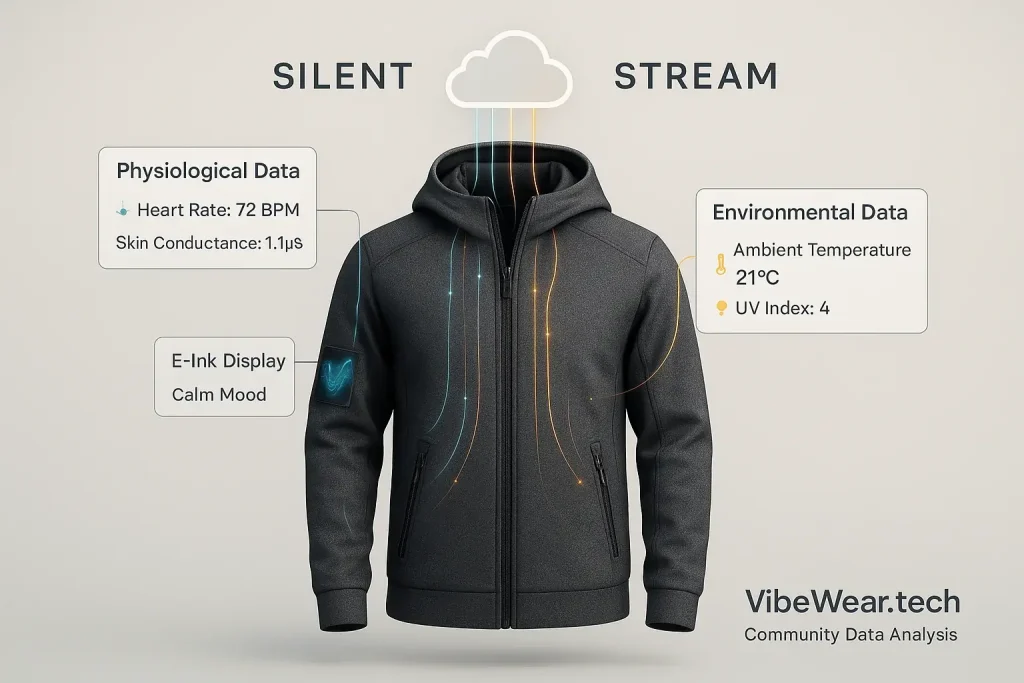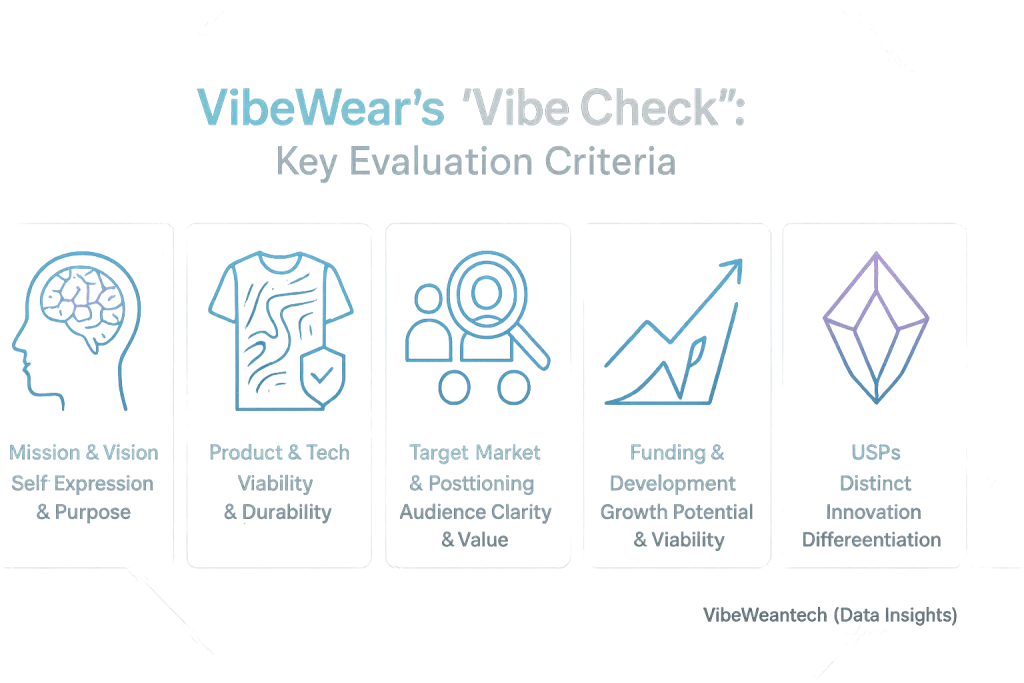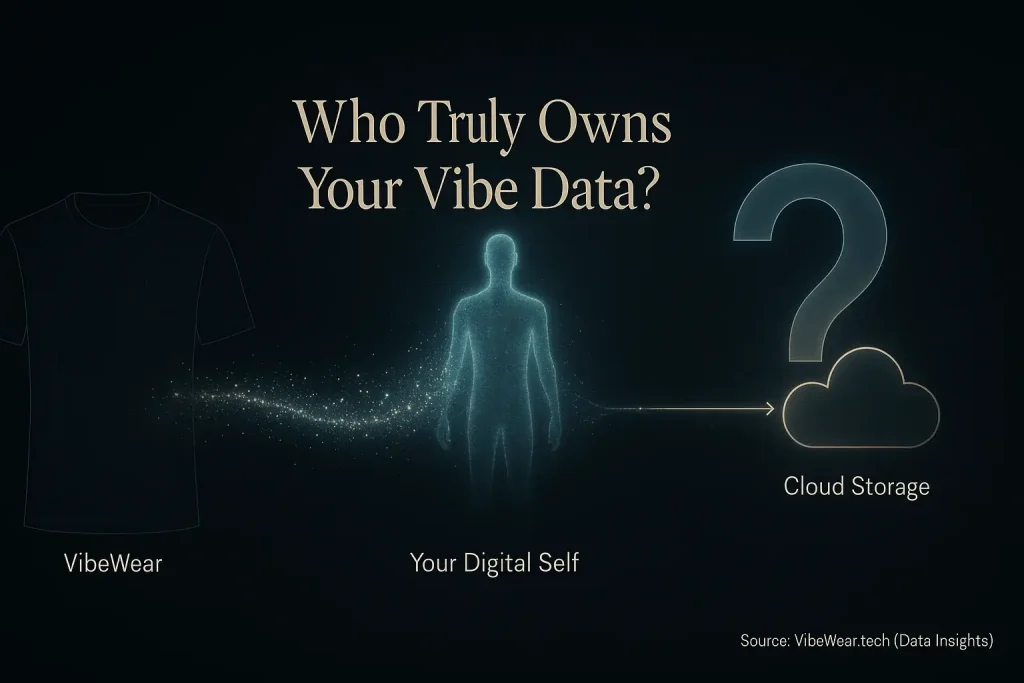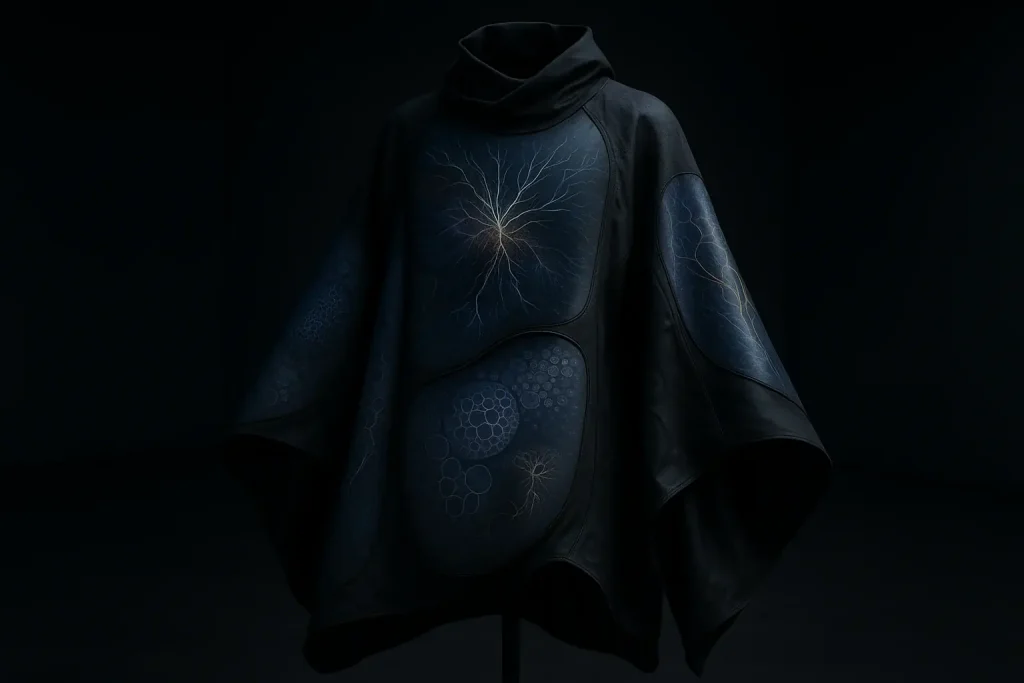The Green Haze: Unpacking 'Eco-Friendly' Claims in E-Ink Fashion
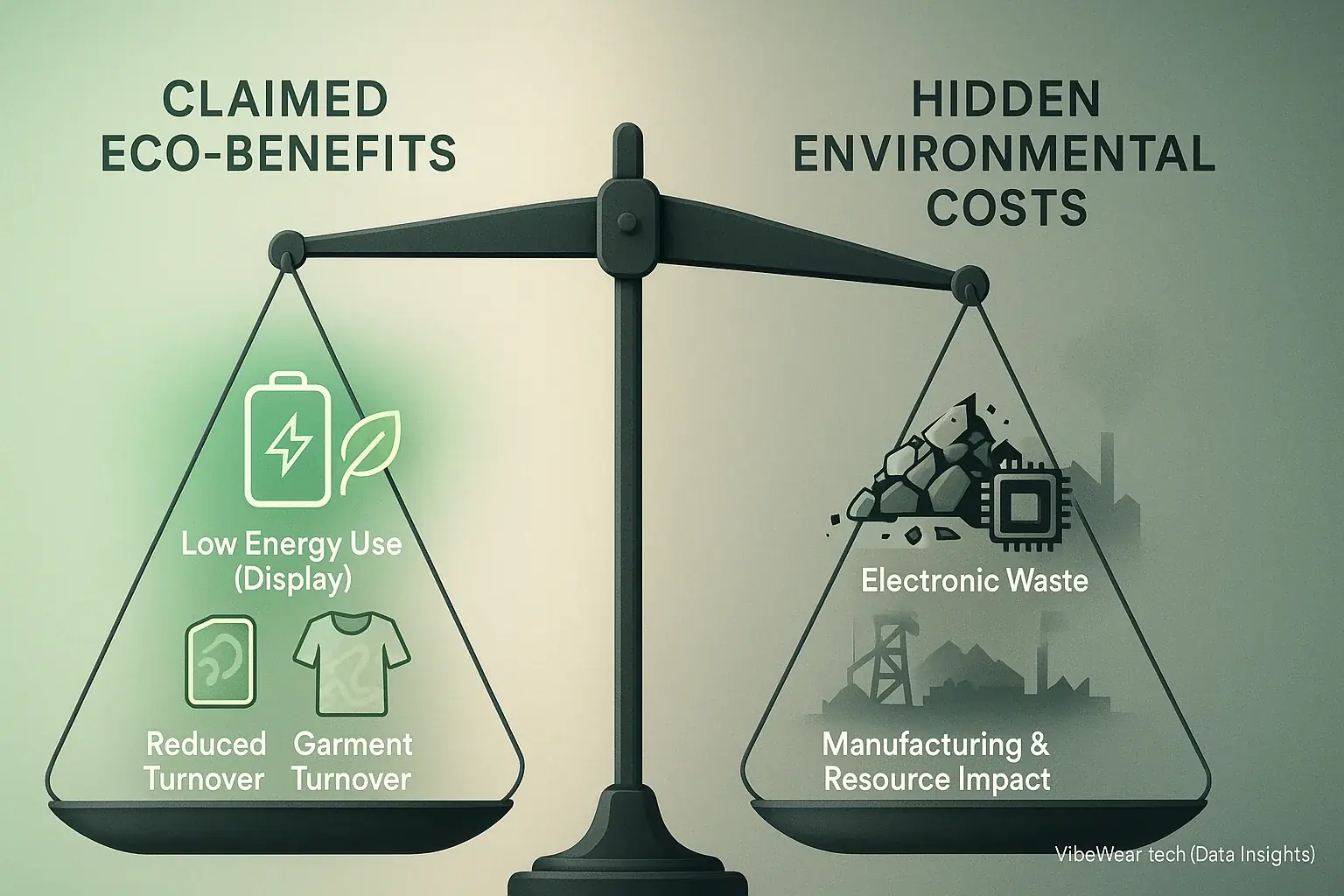
That E-Ink jacket promises 'eco-friendly' style. But what does that label actually mean? Is it genuine green innovation? Or just a well-crafted marketing vibe? Tech-infused fashion is new territory. Many claims need a hard look. VibeWear checks the reality.
E-Ink's low power consumption sounds impressive. It is. The full lifecycle of tech-infused garments, however, presents complexities. Many people see 'E-Ink'. They instantly think 'sustainable' due to its minimal power draw. But as discerning users discover, the environmental story runs much deeper than just battery performance. That's the core issue.
So, what is the real story here? VibeWear deconstructs these 'green' assertions. We examine the often-unseen environmental burdens. We also highlight legitimate sustainable advantages. Our analysis moves beyond surface-level marketing. We uncover the genuine impact of E-Ink fashion. Time for a vibe check.
The Silent Burden: E-Waste & Manufacturing's Carbon Footprint

Your E-Ink screen sips power. A clear advantage. Yet, making that screen, its tiny sensors? That demands much. Manufacturing these components consumes significant energy. It uses diverse resources. Consider a super-efficient electric car. Its production factory leaves a massive footprint. The same truth applies here. The hidden cost of creation is real.
Tech-infused apparel creates complex e-waste. This is an unspoken truth. It differs starkly from traditional clothing. An E-Ink shirt reaches its end. It is not just fabric then. It becomes a challenging mix of materials. These include plastics, rare earth metals, and circuit boards. This electronic cocktail complicates textile recycling. It often means landfill disposal. A tough reality.
The e-waste problem is growing. Research findings show global e-waste reached 53.6 million metric tons in 2019. Projections suggest 74 million tons by 2030. Even small mood-adaptive components contribute to this vast stream. Each tiny sensor adds up. Each discarded display matters. Who bears responsibility for this future waste?
The Paradox of Longevity: Do E-Ink Clothes Truly Reduce Fast Fashion?
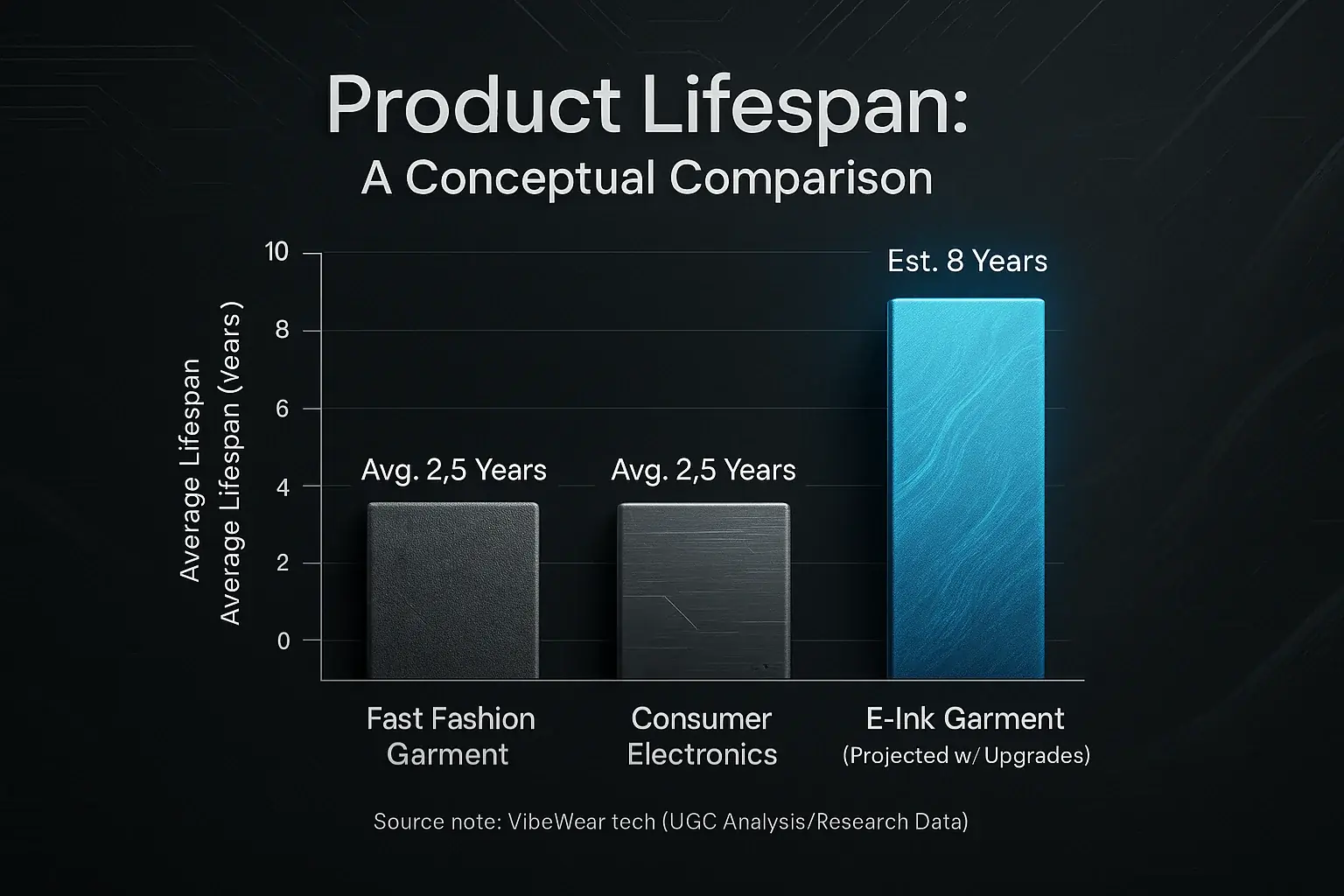
E-Ink fashion presents a compelling argument for sustainability. The theory is attractive. Why purchase multiple shirts? One E-Ink garment can showcase endless designs. This capability could, in theory, drastically reduce textile waste. Overconsumption fueled by fleeting fast fashion trends might decline.
But a critical point emerges. An E-Ink garment is also a piece of technology. Tech possesses its own rapid upgrade cycle. VibeWear's investigation into consumer tech trends reveals smartphones and smartwatches often see upgrades every two to three years. What happens when your E-Ink display becomes outdated? Or its battery degrades? This can occur long before the fabric itself shows wear. Many are now questioning if they are merely swapping one form of disposability for another: fast tech fashion.
True sustainability in adaptive apparel faces a significant hurdle. The challenge lies in harmonizing fashion's potential for longevity with technology's swift advancements. For E-Ink clothing to genuinely reduce waste, its electronic components must match the fabric's durability. They must also offer pathways for upgrades or repairs. Consider this: fast fashion items often last only two to three years. If the embedded tech also lasts merely two to three years, has overall consumption truly lessened? The core issue is stark.
The promise of reduced garment consumption through E-Ink technology hinges on critical design choices. Manufacturers must prioritize modularity. This allows for easier replacement or upgrading of electronic parts. Long-term software support for these components is equally vital. Without these commitments, the vision of truly sustainable, adaptive clothing remains more concept than reality. The potential for a new cycle of tech-driven obsolescence is very real.
End of the Vibe: The Hurdles of Recycling & Disposing of Smart Apparel
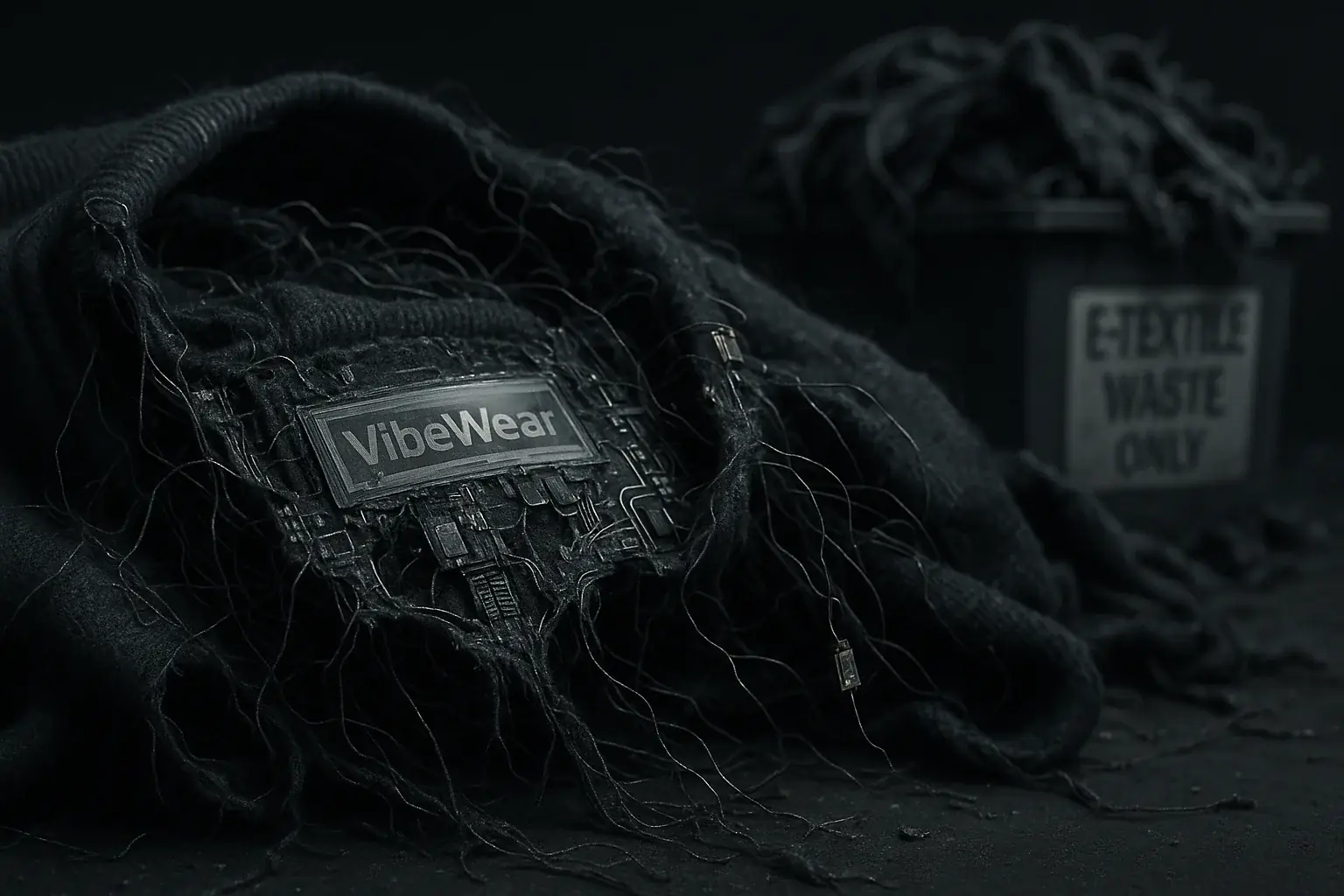
So, you have enjoyed your E-Ink shirt. What happens when it is time to say goodbye? You cannot just toss it like a regular tee. Textile recycling bins are not the correct place. This is where the 'eco-friendly' story often meets a hurdle. Electronics mixed with fabrics create a fundamental disposal challenge.
Many users assume 'recyclable' means simple disposal. The truth? It is more complex. Separating tiny E-Ink panels, wires, and sensors from fabric is difficult. This separation is often a manual, expensive process. Most recycling facilities currently lack equipment for this hybrid waste. This situation leaves owners wondering about proper disposal methods.
Positive developments are emerging. Researchers and forward-thinking brands explore modular designs for apparel. Easier disassembly and specialized recycling streams are key future goals. VibeWear's analysis of waste management practices suggests component reuse shows real promise for sustainability. Until then, responsible disposal means treating smart apparel like old electronics. Not like typical old clothes.
Beyond the Buzzwords: Demanding Transparency in VibeWear's Green Claims
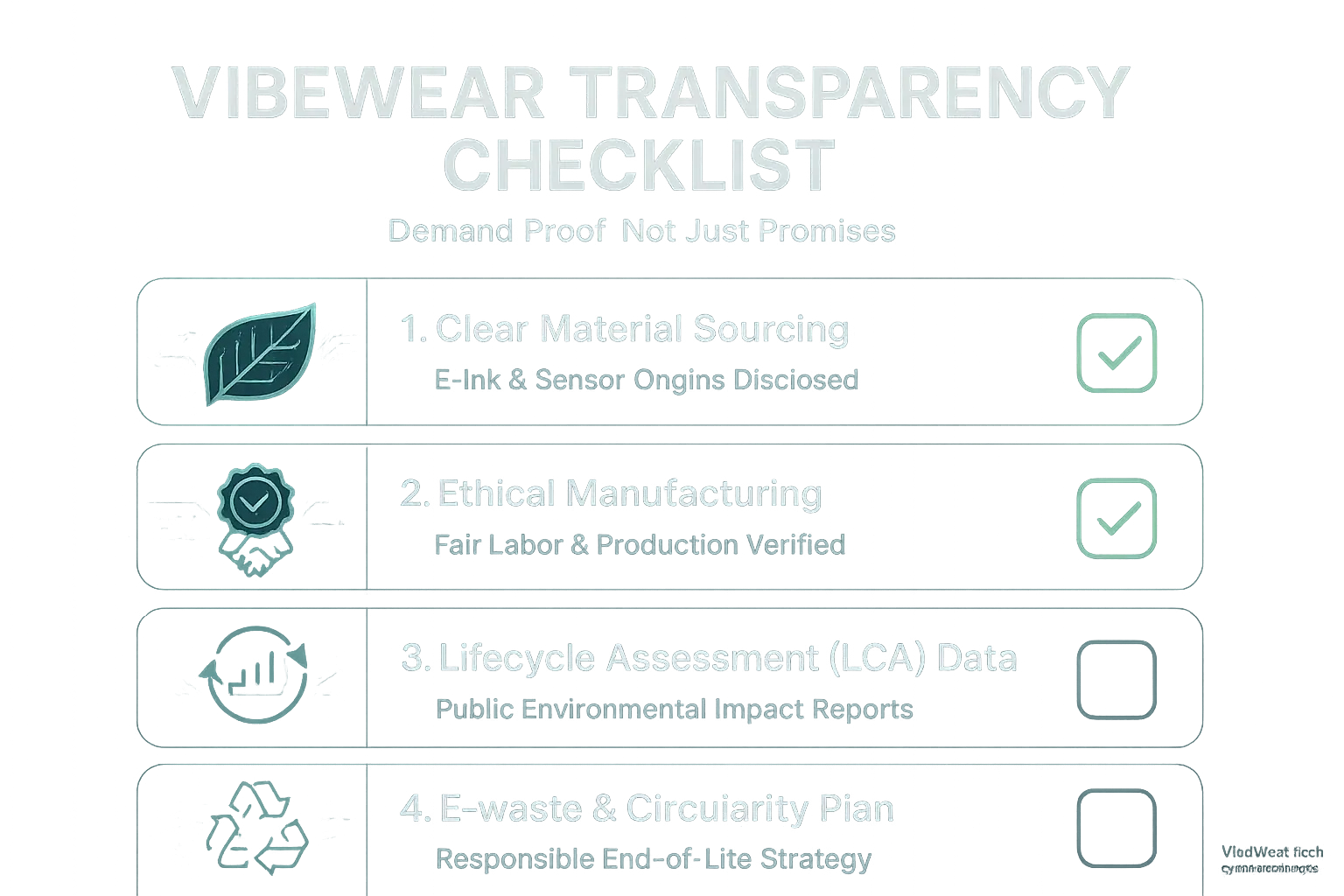
The power to drive genuine sustainability in E-Ink fashion lies with us, the consumers. We look past glossy marketing. Demand clear answers. Vague green claims? Not enough. Consumers deserve provable facts about environmental impact.
A brand claiming 'eco-friendly' is insufficient. We need concrete data. Supply chains require full disclosure. Manufacturing energy footprints matter. End-of-life recycling plans are essential for circularity. Where do their E-Ink panels originate? How are the sensors ethically sourced? These questions demand transparent responses.
When a brand openly shares its challenges and its efforts, that builds strong trust. This transparency, even with imperfections, resonates. Users often say they respect honesty. Empty perfection feels false. Support brands showing their work. Our choices shape future fashion. Demand better. Get better.
Our collective 'vibe check' on sustainability claims is crucial. This scrutiny ensures VibeWear grows responsibly. This exciting new fashion niche deserves integrity from all creators.

